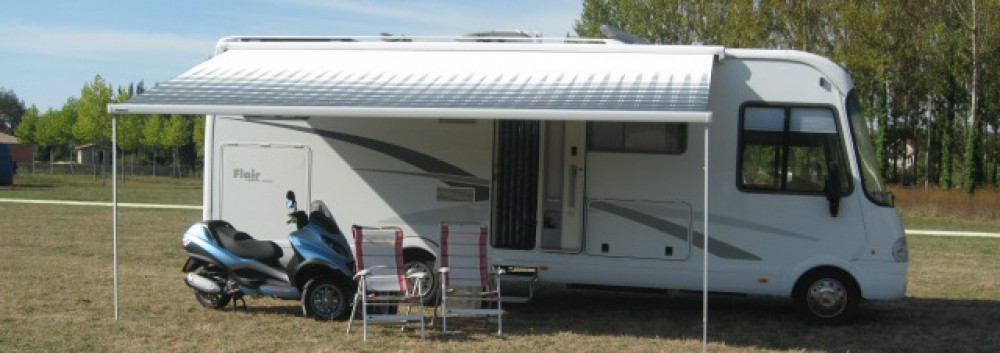Most camper van owners that travel around Europe are pretty much forced down the route of owning a GPS Sat nav. The reason is simple – the majority of motorhome web sites that provide the locations of Aires, Stellplatz, Sostas or Municipal Campsites all give the location as a Lat/Long position. Very few give (or know) the actual address and the directions are vague. If you want to find places from publications like Bord Atlas, All the Aires, Aire de Camping Car or any of the web site offerings such as Camping-Car infos, MHF or Camping-Car NL, then you really have to have a Sat nav.
There are probably more Sat Nav models around than models of camper vans so getting the right one for the best price is down to research and knowing up front what you want. There are several models made for UK/European markets and there are models made for the USA and Far East markets and many sellers will tell that these US systems will work in Europe – they will, but not at the level of detail that you will need when driving in Europe. The US map base models will only give you main routes in mainland Europe and while this is ok in general it will not get you down to the lovely site you picked in the little village of say Beaugency or Gurgy.
So lets look at some of the critical decision factors:-
Fixed or Portable – while this may appear a no brainer its not so. Fixed Sat Nav systems tend not to give you the option to enter a Lat/Long position and if your new camper arrives with a GPS Sat Nav fitted that doesn’t allow Lat/Long entry it will be of limited use. Retrofiting on the other hand would be too expensive. If in doubt check. I will rule out fixed systems for the purpose of this article.
UK only or European – Personally I think it is a false economy to buy a UK only model as while you may not have any short term plans to travel abroad you probably will at some point. UK versions are generally much cheaper than European models.
Screen Size and mountings – this is a personal choice really but my experiences have been that small screens are fiddly and the speakers are weak. Good speakers are essential as the unit has to compete with all the existing noises around and the speaker sizes is limited by the size of the unit. Some cheaper models don’t have a volume adjustment. either. Many sat nav’s are touch screen operated and big fingers can be cumbersome. Mountings on motorhomes can be tricky when the windscreen is out of reach of the driver. There are a few dash mounting brackets and even one that acts like a bean bag and sits on the top of the dash.
Features – Where to start – well the unit is going to be used in a camper van so any feature that can assist in navigating a camper is good. There are one or two units offered for sale that don’t have an option to input Lat/Long so they should be ruled out first. There are also units that will allow the user to store POI’s (Points of Interest) – these can be used to store favorite places. There are some models that include TMC (Traffic Management Control) these features will re-route you whenever there are traffic holdups that would delay you more than say 30 minutes. Adjusting the brighness of the screen is important as there is nothing so annoying as driving along at night with a really bright screen glaring and acting like an oncoming car headlight. You are also lit up and appear ghostly to other traffic.
There are a few models coming on the market that are designed for truckers but these features also suit camper vans. Features included in these are low bridge alert, narrow roads, road weight limits and road width. There are options to input weight, width and height and will route you around any restriction. There are also models that come pre-loaded with thousands of campsites, Aires and parking places.
The Manufacturers may also will include speed camera data and offer to sell you an annual service of keeping these camera spots updated. Map updates are vital and usually the first year of ownership includes free updates so don’t forget to update towards the end of your free period and save up to £70 (the cost of some map updates) Be prepared and exercise patience as it will take you several journeys to “fine tune” the configuration until you get the best set-up that suits you. Remember it takes a lot of time and fuel when you have to slow down or stop frequently at roundabouts or road junctions. Camper vans aren’t like cars or motorbikes that can accelerate quickly. Sometimes its better to take the longer route as this often works out more economical and actually can save time.
As you can see it can be a mine field and is not just a case of picking the cheapest one off the shelf. The most valuable tip I can think of when using GPS Sat Nav’s is don’t rely on it entirely – use it as an aide to help you along and always have a road atlas with you. Sat Nav’s aren’t perfect and you will find them frustrating at times when they try and route you through the centre of a town as its the shortest way when there is a new dual carriageway by-pass just to the left that would save half an hour in time. They are invaluable though in locating Aires, wild camping spots that are off the beaten track, especially when these same Aires aren’t signed anywhere.

